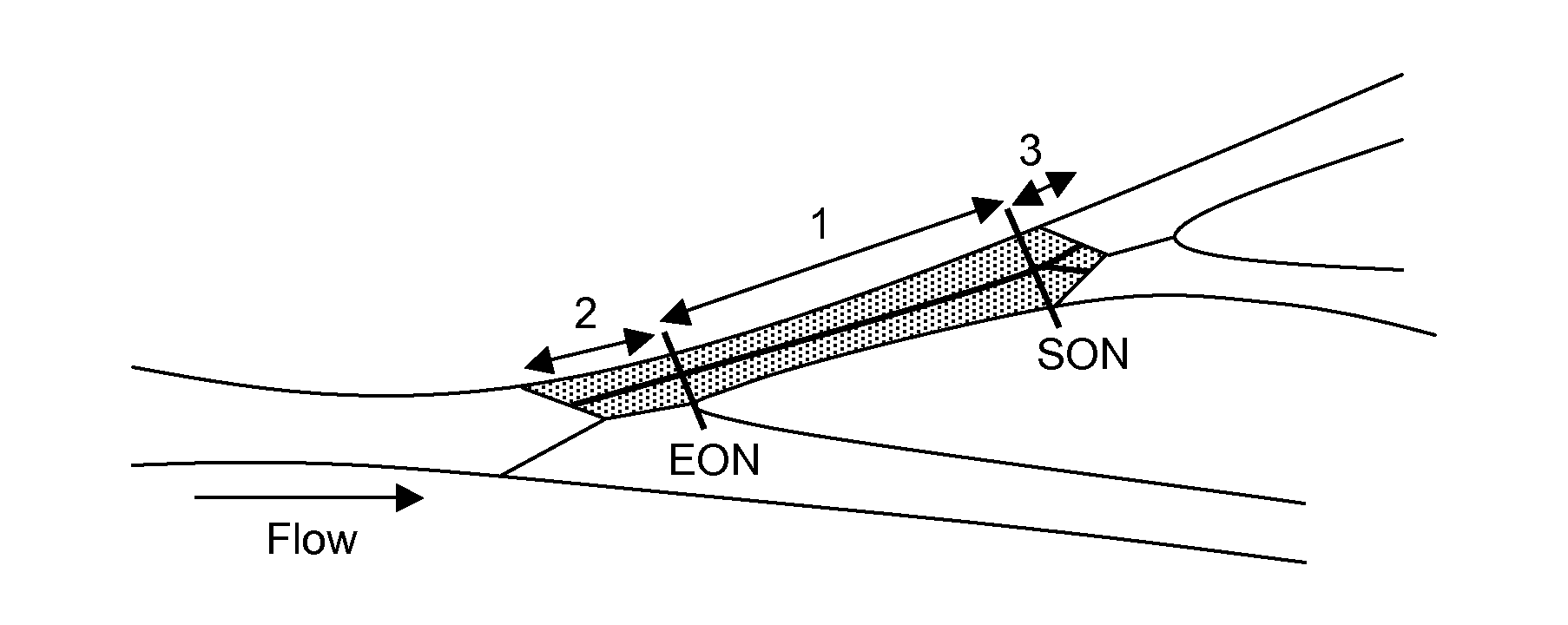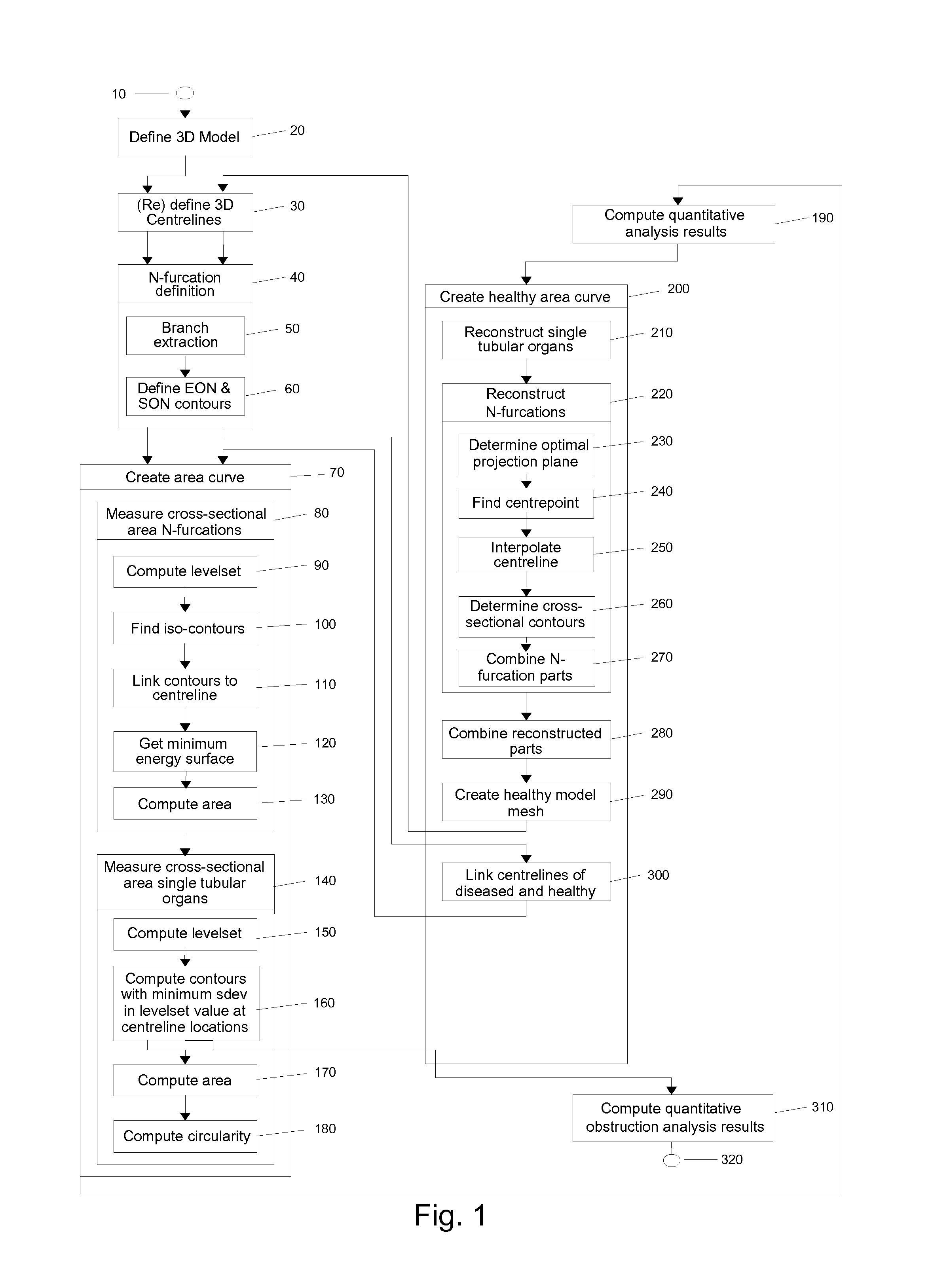Method and Apparatus for Quantitative Analysis of a Tree of Recursively Splitting Tubular Organs
a tree and recursive splitting technology, applied in the field of quantitative analysis of a tree of recursively splitting tubular organs, can solve the problems of not solving the above limitations, stenosis related parameters cannot be computed for a single artery, and the piece of prior art cannot solve the above limitations
- Summary
- Abstract
- Description
- Claims
- Application Information
AI Technical Summary
Benefits of technology
Problems solved by technology
Method used
Image
Examples
Embodiment Construction
[0088]For purposes of description herein, the following terms are defined as follows:
[0089]“proximal” is a term meaning the side of a vessel or tube or tubular organ from which a fluid comes; for example the proximal side of the aorta is the side of the aorta closest to the heart;
[0090]“distal” is a term meaning the side of a vessel or tube or tubular organ where the fluid flows to; for example the distal side of the aorta is the side of the aorta furthest from the heart;
[0091]“lumen” is a term meaning the interior of a vessel or tube or tubular organ through which a fluid flows or the external boundary of the vessel wall, or any position in-between;
[0092]“healthy” is a term meaning the estimated tubular organ dimension as if it were without obstruction or dilation.
[0093]With reference to the block diagram of FIG. 1, an embodiment of the invention is now described.
[0094]Prior art teaches the definition of the 3D lumen wall of the vessels as represented by block 20 in FIG. 1. This is...
PUM
 Login to View More
Login to View More Abstract
Description
Claims
Application Information
 Login to View More
Login to View More - R&D
- Intellectual Property
- Life Sciences
- Materials
- Tech Scout
- Unparalleled Data Quality
- Higher Quality Content
- 60% Fewer Hallucinations
Browse by: Latest US Patents, China's latest patents, Technical Efficacy Thesaurus, Application Domain, Technology Topic, Popular Technical Reports.
© 2025 PatSnap. All rights reserved.Legal|Privacy policy|Modern Slavery Act Transparency Statement|Sitemap|About US| Contact US: help@patsnap.com



